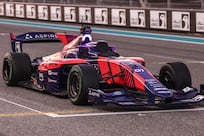BMW will break with tradition by simultaneously selling two completely different cars - and calling them both 1 Series - as early as 2013.
Sources inside the Bavarian company have confirmed the company will sell both front- and rear-drive 1 Series cars within two to three years.
The 1 Series versions will have overlapping model cycles, with the rear-drive versions due for a new, 3 Series-based architecture this year, while the front-drive versions will use BMW's all-new UKL platform.
Yet, bizarrely, BMW's product planners see no option but to market both of its otherwise-separate models as 1 Series cars.
The potentially confusing scenario will be clarified somewhat by giving the rear-drive 1 Series cars more horsepower, while the front-drivers will be aimed more at fleet customers, sources suggested.
"For the 1 Series, the 116 and 118 are the biggest sellers and that's mostly fleet," a source said. "If you ask those fleet customers if it's rear drive or front drive, they don't know and they don't care."
Besides a separate architecture, the two 1 Series models will also have their own exterior and interior design as well.
"They will be different. They will look completely different, they will be in different cycles, but they will still be called 1 Series," another source confirmed.
With the current 1 Series to be updated this year, this will mean neatly overlapping model cycles because the rear-drive 1 Series isn't due for all-new architecture until 2018.
With our source denying the car shares any architecture with the all-wheel-drive Mini Countryman, the most obvious source of economy-of-scale for the front-drive 1 Series is to share with Mini.
To minimise the chances of the front-drive 1 Series cannibalising the profitable Mini sales, it's only likely to get smaller engines, including BMW's upcoming 1.5L, three-cylinder petrol engine.
Three-cylinder engines
BMW has ruled out following Volkswagen and Fiat into two-cylinder engines, instead relying on three-cylinder power plants to pull down its CO2 emissions.
Sources inside BMW confirmed it was leaning towards a 1.5L petrol in-line three-cylinder engine for use in its upcoming city-focused sub-brand "i" and its front-drive 1 Series, but the company denied it was also working on a two-cylinder motor.
The three-cylinder engine will be based around BMW's modular, single-cylinder 500cc unit, complete with direct fuel injection, variable valve timing and lift, as well as turbocharging.
"We developed the optimised 500cc cylinder and the whole development focus was to optimise the thermodynamics of this one cylinder," the source said.
"This way we could have a three-cylinder 1.5, a four-cylinder 2.0 or a six-cylinder 3.0, but we absolutely won't be doing a two-cylinder 1.0."
The company is also in developing a three-cylinder diesel as well, though its board has yet to decide which way to jump with its first production version.
"It looks as if we might go for the petrol one, but it's not clearly decided," one source said.
"If the focus was absolutely for consumption, then we would go for the diesel one, but it's not."
BMW is known to be hoping the three-cylinder layout will have some of its perception issues (as an odd size and as something smaller than a "real" BMW motor) erased by fitting one to the Vision ED concept car, though that car is likely to use a diesel, rather than a petrol, engine.
"We are convinced that by the time it is no longer important to have a set number of cylinders, we will be able to have a better sound from a three-cylinder engine than from a four cylinder," another source said.
"They won't want for technology, either, and they will all be turbocharged and direct injection, even if they are three cylinders. So that fits with our brand."
BMW is also convinced its single-cylinder architecture will help it remain an independent car maker by masking its economy-of-scale shortcomings to Mercedes and the VW Group.
"With the purchasing side, if you build 800,000 petrol engines a year, you need to buy 2.5 million pistons," the source said.
"So we get tremendous volumes that mean we are not a little car maker anymore. We have big car maker volumes."





